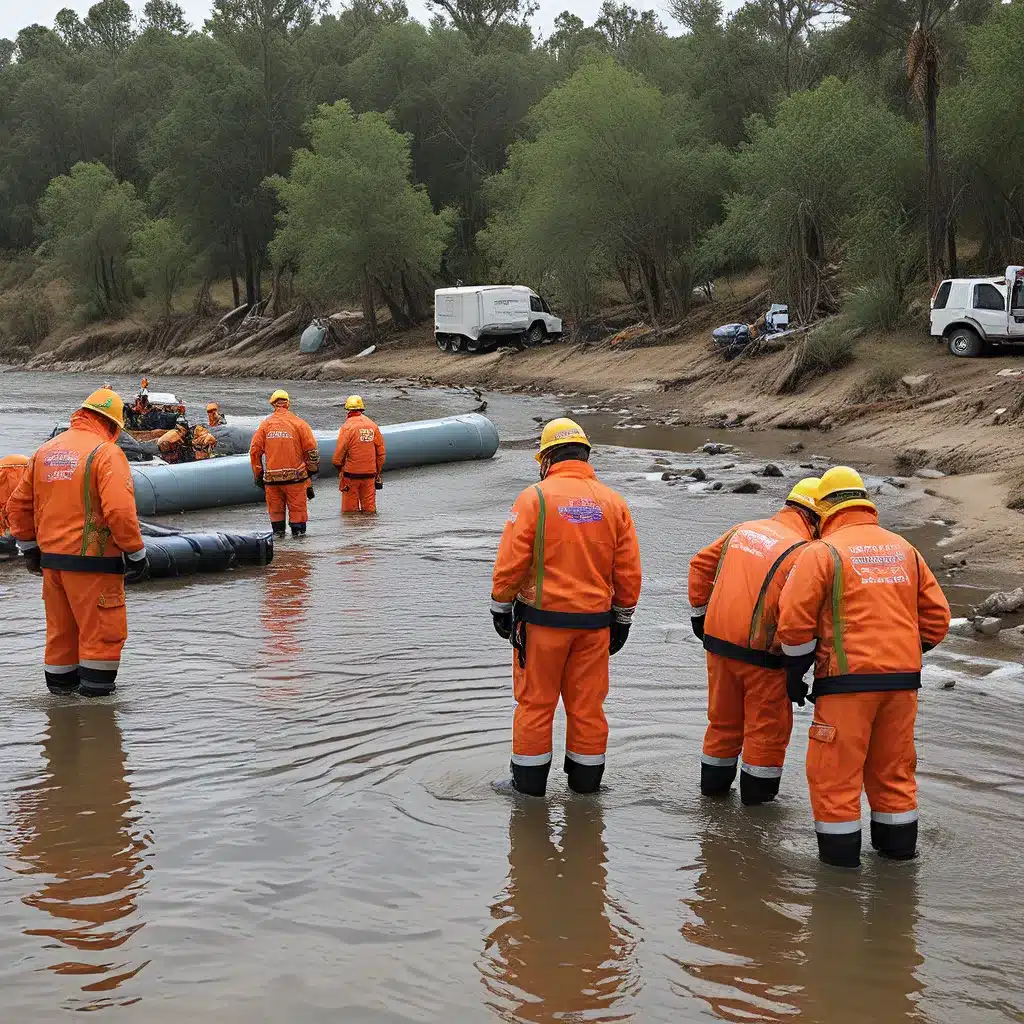
Riding the Waves of Disaster
When disaster strikes, the world holds its collective breath. Entire communities can be left in crisis, with access to clean water cut off and disease threatening to spread like wildfire. But amidst the chaos, a special breed of heroes emerges – water treatment professionals, ready to dive in and become the liquid lifesavers the world so desperately needs.
As I reflect on my experiences working alongside these unsung heroes, I can’t help but be in awe of their unwavering dedication and the sheer impact they have in the darkest of times. From the hurricane-ravaged coasts to the parched, drought-stricken regions, these water warriors put their expertise and passion into action, turning contaminated sources into lifelines for those in need.
Battling the Unseen Foe
One of the most formidable challenges in disaster relief efforts is the battle against the unseen foe – the harmful pathogens and contaminants lurking in the water. Without access to proper water treatment, communities face the harrowing threat of waterborne illnesses like cholera, dysentery, and typhoid fever. These can spread like wildfire, devastating already vulnerable populations.
LifeStraw, a portable water filtration device, can be a game-changer in these situations. As I witnessed firsthand, these compact, lightweight filters can transform even the murkiest of water sources into safe, drinkable liquid. Distributing LifeStraws to affected areas can provide an immediate solution, buying critical time until more comprehensive water treatment systems can be established.
Restoring Hope, Drop by Drop
While the technical aspects of water treatment are undoubtedly crucial, it’s the human element that truly sets these professionals apart. They don’t just see numbers and statistics; they see the faces of those they’re fighting to protect – the children whose laughter has been silenced by illness, the elderly who have weathered one too many storms, the families clinging to the last shreds of hope.
I remember a particularly poignant moment during a relief effort in a drought-stricken region. As the water treatment team set up their equipment, a young mother approached them, her eyes brimming with a mixture of fear and desperation. She had heard the rumors of contaminated water, and the thought of her children falling ill was a nightmare she couldn’t bear. But when the first clean, refreshing drop touched her lips, I witnessed a transformation. The tension in her shoulders melted away, and a glimmer of hope returned to her eyes. It was a reminder that every drop of clean water is not just a lifeline, but a symbol of resilience, a promise that better days lie ahead.
Teamwork: The Lifeblood of Disaster Response
Effective disaster relief efforts are not the work of a single hero, but rather the result of a well-coordinated, dedicated team. Water treatment professionals understand this better than anyone, as they often find themselves collaborating with a diverse array of organizations, from international aid agencies to local community groups.
CPR certification and first-aid training are essential skills that equip these teams to handle not just water-related emergencies, but a wide range of medical crises that can arise in the aftermath of a disaster. By working seamlessly with medical personnel, they ensure that clean water and proper sanitation go hand-in-hand with life-saving medical interventions.
Adapting to the Unpredictable
One of the hallmarks of disaster relief efforts is the unpredictable nature of the challenges that arise. Water treatment professionals must be nimble, quick-thinking, and able to adapt on the fly. Whether it’s navigating damaged infrastructure, working with limited resources, or dealing with unexpected environmental factors, they must be prepared for anything.
I remember a particularly harrowing experience during a flood response operation. The team had set up their water purification system, only to have it compromised by a sudden surge in floodwaters. Without missing a beat, they sprang into action, quickly reconfiguring their equipment and identifying alternative water sources. Their ability to think on their feet and their unwavering resolve in the face of adversity were truly inspiring.
Harnessing the Power of Innovation
As the world faces increasingly complex environmental challenges, water treatment professionals are at the forefront of innovation, constantly seeking new and more efficient ways to provide clean water in the direst of circumstances.
One such innovative solution is the Water Collection Bread, a fascinating concept developed by researchers. This ingenious “bread” is designed to absorb and purify water, transforming it into a safe, drinkable liquid. Imagine entire communities relying on this simple, yet revolutionary, technology to quench their thirst during a crisis.
Unsung Heroes, Lasting Legacies
As I reflect on my time working alongside these water treatment professionals, I’m struck by the profound and lasting impact they have on the communities they serve. Their work goes beyond the immediate relief effort; it’s about restoring dignity, hope, and the fundamental right to clean water that we all too often take for granted.
These unsung heroes may not seek the spotlight, but their legacy lives on in the resilience of the people they’ve saved, the lives they’ve transformed, and the ripples of change they’ve set in motion. They are the liquid lifesavers, the quiet warriors whose dedication and passion are the very lifeblood of disaster relief efforts.
And as the world continues to face the increasing challenges of climate change, water scarcity, and environmental crises, I have no doubt that these water treatment professionals will be there, ready to dive in and make a difference, one drop at a time.


